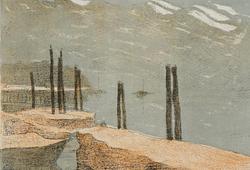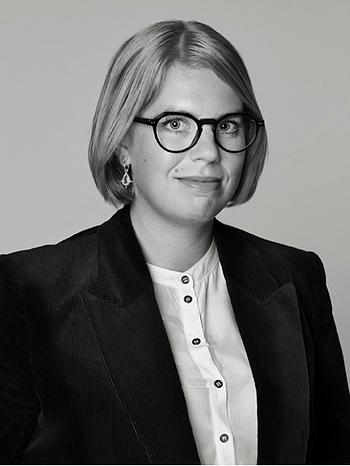Henry Moore
"Mother & Child: Fragment"
Signed and numbered 3/9. Conceived in 1956. Cast in 1976. Sculpture, bronze, height 16.6 cm including stone base.
Tuontiarvonlisävero
Tuontiarvonlisävero (12%) tullaan veloittamaan tämän esineen vasarahinnasta. Lisätietoja saat soittamalla Ruotsin asiakaspalvelumme numeroon +46 8-614 08 00.
Alkuperä - Provenienssi
Connaught Brown, London.
Private collection, purchased by the current owner from the above on October 13, 1995.
Kirjallisuus
A. Bowness (ed.), "Henry Moore, Sculpture and drawings, Sculpture 1955-64, vol. III", London, 1986, no. 409b, p. 29 (another example illustrated).
Muut tiedot
"The 'Mother and child' idea is one of my two or three obsessions ... But the subject itself is eternal and unending, with so many sculptural possibilities in it – a small form in relation to a big form, the big form protecting the small one, and so on. It is such a rich subject, both humanly and compositionally, that I will always go on using it" (Henry Moore, "Henry Moore: Drawings 1969-79", Wildenstein, New York, 1979, p. 29).
Moore was a student when he made his first sketch depicting a mother and child in 1921-22. He quickly realized the richness of the motif, both on a human and a formal level, and it became an artistic obsession that he explored throughout his life. In his later years, Moore's interest in the theme overshadowed all others and was translated into works characterized by his inventiveness.
"From very early on I had an obsession with the mother and child theme – it has been a universal theme from the beginning of time and some of the earliest sculptures we've found from the Neolithic Age are of a mother and child. I discovered, when drawing, I could turn every little scribble, blot or smudge into a mother and child" (Henry Moore and John Hedgecoe, "Henry Moore, My Ideas, Inspiration and Life as an Artist", Ebury Press, London, 1986, p. 155).
The relationship between mother and child is often associated with notions of love, protection, and nourishment, but Moore's treatment of the theme reveals a more nuanced understanding. In the auction's work, Moore has reduced the forms to fragments, as the title suggests. As a viewer, one can recognize the feeling of reaching out to one's child or, as a child, reaching out for a mother's embrace.




























